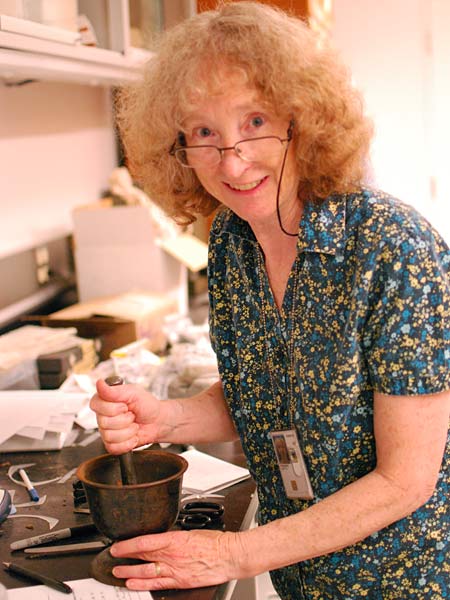February 2 Program: The Chesapeake Bay Impact and its Blasted Fossils
by Cindy Schmidtlein, MSDC Vice President

The second largest known impact crater in the United States lies wholly buried beneath the lower Chesapeake Bay in Virginia. Our speaker for February is a paleontologist who helped discover it.
The Chesapeake Bay impact event occurred during the late Eocene, approximately 35 million years ago; after the dinosaurs, before the woolly mammoths. The impactor struck where the ocean was shallow, underlain by gently sloping, relatively unconsolidated sediments that included many fossils, in turn underlain by hard-rock basement. The result of the impact was a complex crater. Large tsunamis affected most of the North Atlantic basin.
Our presenter, Dr. Lucy Edwards, is a Scientist Emeritus at the Florence Bascom Geoscience Center, a part of the U.S. Geological Survey in Reston, VA. She also is a Fellow of the American Association for the Advancement of Science (AAAS). Her research focuses on the stratigraphy of the Atlantic and Gulf Coastal Plains. Her specialty is dinoflagellates (a type of algae) and she studies their fossil cysts for what they reveal about the time and environment of deposition and how they came to be preserved in the fossil record. Her presentation will include an introduction to her favorite fossils, salient facts and speculations about the Chesapeake Bay impact structure, and personal tales of experiences studying this buried feature.
Dr. Edwards holds a B.A. degree in Geology from the University of Oregon and a Ph.D. in Geological Sciences from the University of California, Riverside. She has taught courses at George Washington University, Indiana University, University of Kansas, University of Oslo, George Mason University, and Türkiye Petrolleri AO.
